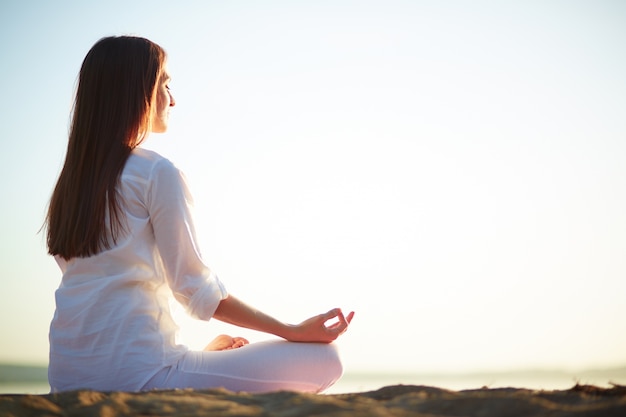Knowing your own illness occurs when the mind is calm. Mindfulness is the practice of being aware of your body, Gayakatanussati is the contemplation of body movements, whether eating, sleeping, walking, standing, or sitting.
When one’s mind is calm and relaxed, one’s senses will become more vigilant, allowing one to become aware of one’s own illness. Some Buddhist monks could realize that they had cancer, and were actually diagnosed with cancer upon medical checkup. Some even used the power of meditation to alleviate the cancerous tumors.
When the mind is anxious, one will not know how one’s body is. Sometimes when we have wounds but are running away from something, we forget the pain because the mind is distracted.
When there is peace of mind, awareness of the body is realized. For example, when one meditates or prays, fatigue or aches in the body can be felt, or even noticing such things as the tingling in one’s feet. In fact, these symptoms occur all the time, although we are not aware of them.
We will be always have full self-awareness with inner calm. To what extent, then, can we achieve inner calm? According to Tripitaka scripture, it was depicted that the day Lord Buddha attained enlightenment, he was practicing a high-level meditation and achieved the eight stages of Jhana, and could miraculously travel into his own body and examine blood, pus, and bones as if looking through a microscope. He consequently saw that the human body is ever-changing from birth to death, though ordinary people like us do not have to practice to that level.
The principle is simple: when the mind is at peace, there is more awareness of the body, and one can realize whether one is healthy or not without relying on medical equipment for health check.
To achieve this inner state of calm, one has to practice Satipatthana meditation and contemplate the body within the body.
By contemplating each stretch of vertebrae while we are seated, we will understand how each bone is aligned. After all, we need to practice this because this skill cannot be self-learned and be achieved promptly, it requires training efforts.
The mindfulness practice that can be easily done is Satipatthana meditation. When walking, walk slow steps to contemplate. Upon taking each step, express the feelings you experience, such as “I step”, “I know”, “I feel fatigue”, “I feel aches”, “I feel hot”, “I feel cold”, “I feel hungry.“
When beginning, there is less feeling of awareness, so walking barefoot may be recommended so as to feel the soles of the feet on the ground. Taking slow steps will gradually calm the mind down. The ones who often practice mindfulness will detect and understand the emotions of others faster. Each individual will have different levels of feelings regarding happiness and suffering. Practicing mindfulness is to do things slowly, sensing the movements of your body. It is self-awakening in order to be aware of our physical and emotional states, or sometimes even to know the minds of others.
Compile by: Winna Rakkarn
Photo credit: Freepik

